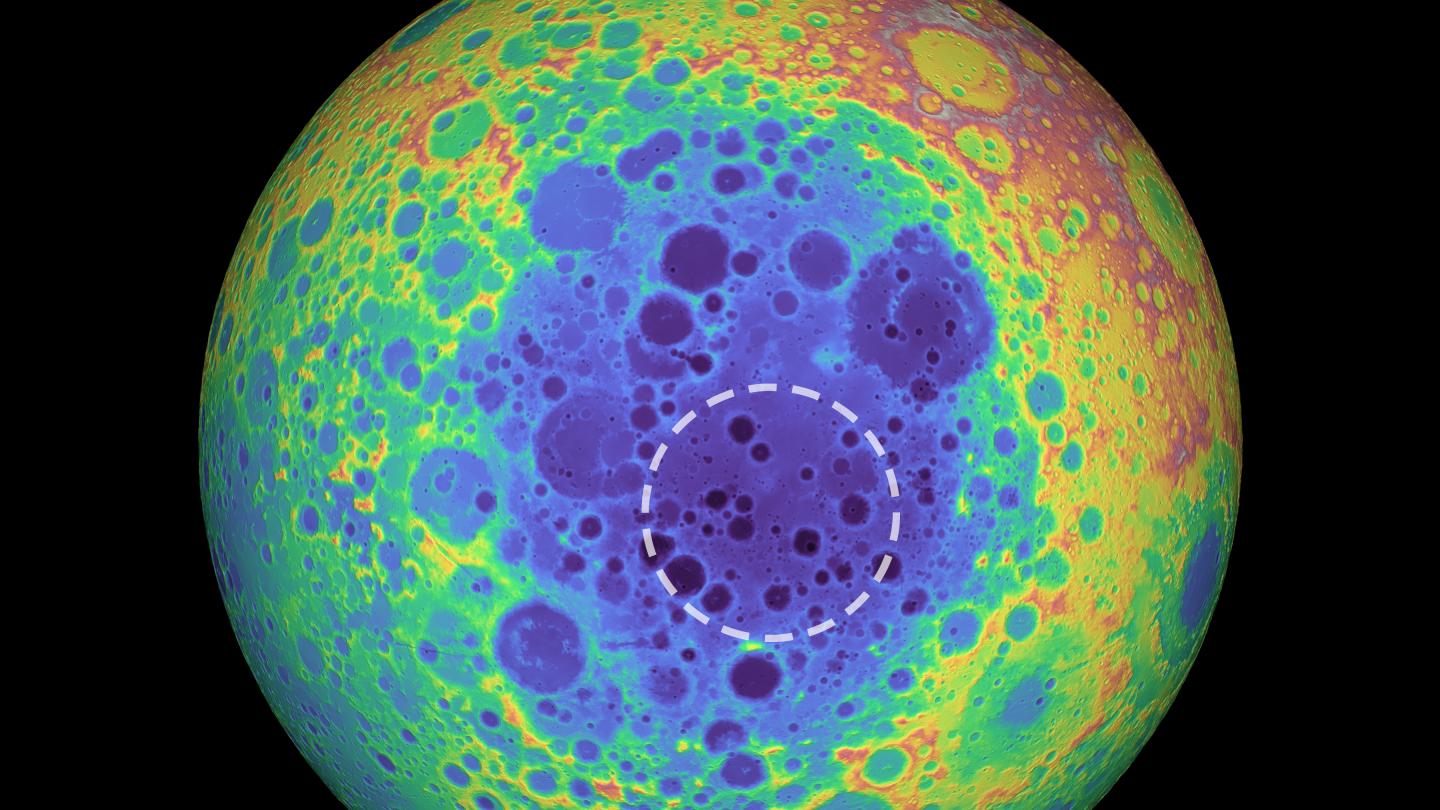An 'Anomaly' the Size of Hawaii Is Buried Beneath the Moon's Biggest Crater

Earth's moon is hiding an enormous secret on its storied dark side. Deep below the moon's South Pole-Aitken basin (the largest preserved impact crater anywhere in the solar system), researchers have detected a gargantuan "anomaly" of heavy metal lodged in the mantle that is apparently altering the moon's gravitational field.
According to a study of the mysterious blob, published April 5 in the journal Geophysical Research Letters, the anomaly may be the heavy leftovers of the asteroid that crashed into the far side of the moon and created the giant South Pole-Aitken crater some 4 billion years ago. However, all that researchers can say for sure at this point is that the blob is big — likely weighing somewhere in the neighborhood of 2.4 quadrillion US tons (2.18 quintillion kilograms).
"Imagine taking a pile of metal five times larger than the Big Island of Hawaii and burying it underground," lead study author Peter James, assistant professor of planetary geophysics at Baylor University’s College of Arts & Sciences, said in a statement. "That's roughly how much unexpected mass we detected." [10 Interesting Places in the Solar System We'd Like to Visit]
James and his colleagues discovered the blob while comparing maps of lunar topography with data collected by NASA's Gravity Recovery and Interior Laboratory (GRAIL) mission — a 2011 experiment wherein two satellites orbited the moon in tandem, mapping the precise strength of its gravitational pull at various locations.
The GRAIL readings revealed something very heavy tugging down the bottom of the South Pole-Aitken crater by more than half a mile.Whatever it was, the offending anomaly was buried hundreds of miles below the moon's surface.
In the new study, the researchers ran impact simulations to show that this underground debris could, theoretically, be the remnants of a heavy iron-nickel asteroid that got stuck part way to the lunar core.
"We did the math and showed that a sufficiently dispersed core of the asteroid that made the impact could remain suspended in the Moon's mantle until the present day," James said.
Sign up for the Live Science daily newsletter now
Get the world’s most fascinating discoveries delivered straight to your inbox.
Measuring about 1,553 miles (2,500 kilometers) wide, the South Pole-Aitken crater is already one of the moon's largest mysteries. Not only is it the biggest impact crater in the solar system, but its towering rim and deep basin also contain the moon's highest and lowest elevations.
Researchers aren't totally sure what the vast bowl of dusty rock is made of, but think it could include some chunks of lunar mantle amidst the upper layers of crust and dust. China's Chang'E-4 lander, which reached the far side of the moon earlier this year, recently began analyzing soil near the crater, giving scientists their first peek at what the moon's innards might be made of. As a moon-walker might say, that's one small step toward understanding the blob.
- 5 Mad Myths About the Moon | Supermoon & History of Lunacy
- Mars InSight Photos: A Timeline to Landing on the Red Planet
- The 12 Strangest Objects in the Universe
Originally published on Live Science.

Brandon is the space/physics editor at Live Science. His writing has appeared in The Washington Post, Reader's Digest, CBS.com, the Richard Dawkins Foundation website and other outlets. He holds a bachelor's degree in creative writing from the University of Arizona, with minors in journalism and media arts. He enjoys writing most about space, geoscience and the mysteries of the universe.









